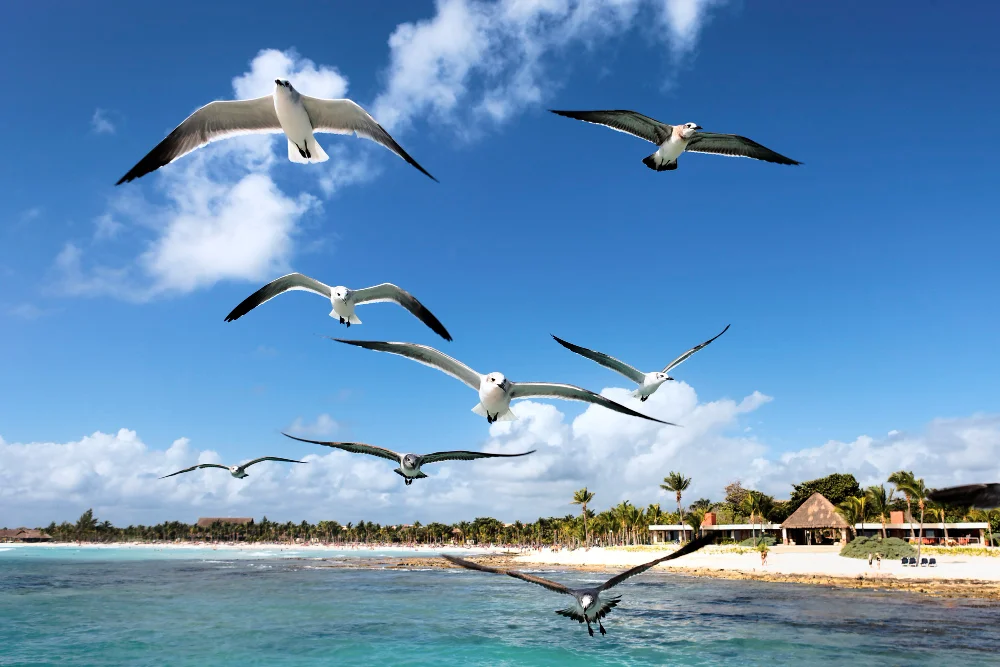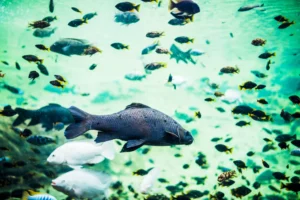I still remember watching a flock of frigatebirds glide above the Indian Ocean, wings stretched wide, not flapping for minutes on end. Our guide—a marine biologist—turned to me and said, “They’re probably napping right now.” My first reaction? Disbelief. How could anything sleep mid-air without crashing into the sea or plummeting to the earth?
But it turns out, nature doesn’t play by our rules. And when it comes to birds, sleep is far more fascinating than we give it credit for. So, can birds really sleep while flying? Yes—but it’s not quite as dreamy as curling up in bed. Let’s take flight into the science behind this evolutionary marvel.
How Birds Sleep: A Brief Overview
Before diving into mid-air sleep, it helps to understand how birds sleep in general. Unlike humans, birds can engage in unihemispheric slow-wave sleep (USWS). That means one half of their brain rests while the other remains alert.
Many species do this while perched, particularly in high-alert environments. You may spot a bird with one eye open and the other shut—it’s not just being cheeky. That open eye is connected to the awake hemisphere of the brain.
Birds That Sleep While Flying
While many birds rely on perches or nests to rest, some species spend weeks or months on the wing. Frigatebirds, swifts, and albatrosses are among the most notable long-distance fliers that have adapted to sleep during flight.
In a 2016 study published in Nature Communications, researchers tagged great frigatebirds with EEG devices. What they found was astonishing: these birds could sleep for up to 42 minutes per day mid-flight, typically in short bursts lasting seconds to minutes. That’s a tiny fraction of the 12+ hours they’d typically get on land.
“This kind of sleep is unlike anything we’ve seen before,” said Dr. Niels Rattenborg, a neuroscientist at the Max Planck Institute for Ornithology. “It suggests a unique evolutionary trade-off between sleep and survival.”
How Do They Do It?
Unihemispheric Slow-Wave Sleep in Flight
The key lies in USWS, mentioned earlier. Birds can essentially keep one eye open (literally) and one hemisphere of the brain alert while the other rests. This allows them to continue flying, navigate weather systems, and avoid predators—even while catching up on some much-needed rest.
Microsleeps and Sleep Efficiency
Frigatebirds and other species don’t enjoy deep REM sleep in the sky. Their airborne slumber consists mostly of non-REM, light sleep. Interestingly, this type of rest appears to be enough to maintain their cognitive performance during these long flights.
In fact, when these birds return to land, they often catch up on REM sleep, just like humans recovering from jet lag.
Evolutionary Benefits and Risks
Why evolve the ability to sleep mid-flight in the first place? The answer, like most things in evolution, lies in survival:
- Predator avoidance: Sleeping while in the air allows birds to avoid ground-based predators.
- Migration: Birds like swifts migrate thousands of kilometres. Stopping to rest isn’t always feasible.
- Foraging advantage: Constant movement allows for feeding over wide areas.
That said, it’s not without cost. Airborne sleep is fragmented, shallow, and limited, making it a short-term adaptation rather than a long-term strategy.
Do All Birds Sleep in the Air?
No. In fact, the vast majority of birds do not sleep while flying. Only certain pelagic (open-sea) birds and aerial foragers have shown this capacity. Songbirds, raptors, and most land-dwellers need to land to get quality rest.
Some migrate at night and rest by day, while others take stopovers during long journeys. Unlike humans, they can sleep in short bursts throughout the day and night—another evolutionary trick for endurance.
Human Comparisons and Fascinating Insights
Imagine if we could sleep while driving—sounds reckless, right? But that’s essentially what these birds are doing.
Interestingly, marine mammals like dolphins also exhibit unihemispheric sleep. They keep half their brain awake while swimming. The fact that such different animals evolved similar solutions independently speaks to the efficiency of nature’s problem-solving.
As someone who’s tracked seabirds off the coast of Sri Lanka, I can tell you: watching them is like observing poetry in motion. They aren’t just flying—they’re optimising every flap, every glide, and yes, even every wink of sleep.
FAQs
Can parrots or pet birds sleep while flying?
No. Domesticated or land-dwelling birds like parrots don’t sleep in flight. They need perches and stable environments.
How do scientists measure bird sleep mid-air?
Through lightweight EEG sensors attached to the birds. These measure brain waves, eye movement, and flight motion.
What bird sleeps the longest while flying?
So far, frigatebirds hold the record with 42 minutes of sleep per day during non-stop flight stretches of up to 10 days.
Does sleep deprivation affect birds?
Yes, just like humans, birds make up for lost sleep once they land, particularly catching up on REM cycles.
Key Takeaways for Nature Lovers and Ornithology Buffs
- Birds like frigatebirds can sleep while flying, but only using half their brain.
- This sleep is light and fragmented—more survival mechanism than luxury.
- It’s a unique adaptation for long migrations and life at sea.
- Most birds cannot sleep in the air—only specific species have evolved this.
- Next time you see a bird gliding for long stretches, it might just be squeezing in a nap!
Final Thoughts & Let’s Discuss
Birds have evolved mind-bending capabilities, and sleeping in flight is one of the most impressive. As researchers uncover more about animal sleep, we’re constantly reminded that our human sleep rules don’t always apply in the wild.
Have you observed bird behaviour that made you question what’s possible? Or spotted a long-flying bird mid-glide that looked almost too relaxed? Share your stories and thoughts in the comments below—I’d love to hear them.
Further Reading & Sources:
- Rattenborg et al., Nature Communications, 2016
- Max Planck Institute for Ornithology
- Audubon Society: Bird Migration Insights
- BBC Earth: “The Birds That Sleep on the Wing”
Read Also: What If the Oceans Were Made of Lemonade?




